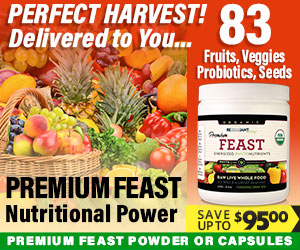Table of Contents
- 1. Prioritize Raw and Fresh Live Foods
- 2. Incorporate Fermented Live Food Items
- 3. Understand the Nutritional Power of Sprouts
- 4. Use Proper Storage Techniques to Preserve Live Nutrients
- 5. Combine Live Foods for Enhanced Digestive Benefits
- 6. Incorporate Superfoods into Your Live Food Diet
- 7. Stay Hydrated with Live Food Juices and Smoothies
- 8. Avoid Common Mistakes That Damage Live Food Nutrition
- 9. Customize Your Live Food Nutrition Plan for Your Needs
- 10. Stay Informed About Trends in Live Food Nutrition for 2025
1. Prioritize Raw and Fresh Live Foods
The Benefits of Freshness
When it comes to live food nutrition, the freshness of your foods plays a pivotal role. Fresh, raw foods retain more enzymes, vitamins, and minerals, which are often diminished through cooking or prolonged storage. In 2025, many nutrition experts stress the importance of consuming minimally processed, live foods to maximize nutrient intake.
For example, freshly prepared salads with raw vegetables and fruits can offer significantly higher antioxidant levels than canned or cooked versions. These antioxidants are vital in fighting oxidative stress and maintaining overall health. Incorporating a variety of raw foods into your diet ensures youâre benefiting from their live enzymes.
Moreover, choosing organic produce when possible reduces exposure to pesticides, which can interfere with nutrient absorption and compromise live food nutrition. Remember, the goal is to consume foods in the state closest to nature. Regularly shopping at local farmersâ markets can help you access fresher, more nutritious live foods.
Practical Tips for Incorporation
- Shop at local markets for peak freshness.
- Prepare salads and smoothies that retain the natural enzymes.
- Avoid pre-packaged, processed options that reduce nutrient levels.
2. Incorporate Fermented Live Food Items
The Power of Fermentation
Fermented foods like sauerkraut, kimchi, kefir, and kombucha are rich in probiotics, which are essential for a healthy gut microbiome. In 2025, evidence continues to affirm that gut health is directly linked to overall well-being, immunity, and even mental health. Fermented foods boost live food nutrition by introducing beneficial bacteria that aid digestion and enhance nutrient absorption.
Unlike processed probiotics, fermented foods contain a diversity of strains that are naturally occurring and better suited for long-term gut health. Regular intake of these foods can improve digestion, reduce inflammation, and support a balanced microbiome.
To maximize benefits, opt for homemade fermented foods or trusted organic brands that donât contain additives or preservatives. Incorporating small servings daily can significantly enhance your live food nutrition profile over time.
Tips for Including Fermented Foods
- Add fermented vegetables to salads or as side dishes.
- Enjoy a glass of kefir or kombucha daily.
- Experiment with homemade recipes to control ingredients and fermentation times.
3. Understand the Nutritional Power of Sprouts
Why Sprouts Are a Superfood
Sprouts like alfalfa, mung bean, and broccoli sprouts are tiny but mighty mental powerhouses. They contain concentrated levels of vitamins, minerals, and antioxidants, making them a cornerstone of live food nutrition in 2025. Their seeds are essentially dormant until sprouted, at which point they become highly bioavailable.
Research indicates that sprouts can have 10-100 times higher nutrient levels than mature vegetables. This makes them a cost-effective and nutrient-dense addition to your diet. They enhance the digestibility of nutrients and provide enzymes that support digestion.
Incorporating sprouts into your mealsâwhether in salads, sandwiches, or smoothiesâcan significantly boost your intake of chlorophyll, vitamin C, and other vital phytochemicals beneficial for health.
How to Grow and Use Sprouts
- Use sprouting jars or trays for home cultivation.
- Rinse sprouts thoroughly to remove any bacteria or mold.
- Add sprouts fresh to salads, wraps, or smoothies for maximum live food nutrition.
4. Use Proper Storage Techniques to Preserve Live Nutrients
Best Practices for Freshness
Storing live foods correctly is crucial for maintaining their nutritional integrity. Light, heat, and air exposure can degrade enzymes and vitamins, reducing the live food nutrition value. In 2025, updated storage guidelines focus on maximizing nutrient preservation.
Keep fresh produce in breathable containers in the crisper drawer of your refrigerator. For fermented foods, store them in airtight containers but avoid overfilling, which can lead to spoilage.
Additionally, consider vacuum sealing to prolong shelf life without compromising nutrient quality. When possible, consume live foods promptly after purchase or harvest for maximum benefits.
Practical Storage Tips
- Use glass containers instead of plastic to reduce leaching of chemicals.
- Label foods with dates to prioritize early consumption.
- Maintain consistent refrigerator temperature (around 37°F or 3°C).
5. Combine Live Foods for Enhanced Digestive Benefits
Synergistic Effects of Food Pairings
Creating combinations of different live foods can unlock synergistic effects that improve digestion and nutrient absorption. For example, pairing fermented foods with fibrous vegetables enhances probiotic delivery and promotes healthy gut bacteria.
Mixing sprouted grains with raw vegetables or adding fermented condiments can also improve enzyme activity, further aiding digestion. These combinations are especially effective in 2025 nutrition plans focused on gut health.
Additionally, incorporating herbal teas or spices like ginger and turmeric with live foods can help reduce inflammation and improve digestion, making your meals both tasty and beneficial.
Actionable Food Pairings
- Sauerkraut with whole-grain bread or crackers.
- Sprouted grain salads with raw vegetables and fermented dressings.
- Fermented beverages alongside nutrient-dense raw snacks.
6. Incorporate Superfoods into Your Live Food Diet
Top Superfoods for 2025
Superfoods like chia seeds, spirulina, and acai berries are even more relevant in 2025 for their dense nutrient profiles. When integrated into live food nutrition plans, they elevate the health benefits significantly. Adding chia seeds to smoothies or sprouts can boost omega-3 fatty acids, fiber, and antioxidants.
Spirulina, a blue-green alga, packs a punch of protein, B vitamins, and essential minerals, making it a superb supplement to live foods. Its powdered form can be easily added to drinks or raw dishes.
In 2025, trends point toward combining superfoods with raw or fermented foods to create nutrient-dense, enzyme-rich meals that support optimal health.
Huge Discount on the Best Certified Organic Nutrient Dense Supplement!
How to Incorporate Superfoods
- Mix chia seeds into smoothies or overnight oats.
- Add spirulina powder to juices or soups.
- Use acai in frozen bowls or smoothies for antioxidants.
7. Stay Hydrated with Live Food Juices and Smoothies
Hydration and Nutrition
In 2025, the importance of hydration cannot be overstated, especially when consuming live foods. Juices and smoothies made from raw fruits and vegetables not only hydrate but also bring essential live nutrients directly into the bloodstream.
Blending raw greens like kale, spinach, and wheatgrass with fruits like berries or citrus creates nutrient-packed drinks that support detoxification and energy levels. They retain enzymes that aid digestion and boost overall live food nutrition.
Be mindful of added sugars; prefer natural sweeteners like honey or dates to keep your drinks healthy and nutrient-rich.
Tips for Making Nutritious Live Food Drinks
- Use a high-speed blender for smooth textures.
- Add a splash of lemon or ginger for flavor and added benefits.
- Consume juices immediately for maximum enzyme preservation.
8. Avoid Common Mistakes That Damage Live Food Nutrition
Key Pitfalls to Steer Clear
One of the biggest errors in maintaining live food nutrition is overcooking or exposing foods to high heat, which destroys enzymes and reduces nutrient content. Similarly, storing foods for too long or in poor conditions can lead to nutrient loss and spoilage.
Another mistake is using chemical-based preservatives or pesticides, which can compromise the benefits of live food nutrition. Always opt for organic, minimally processed options.
Lastly, not washing raw produce thoroughly can introduce bacteria or pesticides that negate some health benefits. Proper cleaning is essential before consumption.
Actionable Preventative Measures
- Use gentle washing techniques for raw foods.
- Avoid cooking foods above 118°F (48°C) to preserve enzymes.
- Rotate fresh and fermented foods for balanced live nutrition.
9. Customize Your Live Food Nutrition Plan for Your Needs
Personalization for Optimal Results
Everyone’s nutritional needs are unique, especially in 2025 as new health trends emerge. Tailoring your live food nutrition plan based on age, activity level, and health goals can maximize benefits. For example, athletes may need more sprouted grains and protein-rich foods, while those seeking detoxification might focus on green juices and fermented foods.
Work with a nutritionist or use reputable apps to track your intake and ensure you’re meeting your specific needs. Keep a journal to note how different foods impact your energy and digestion.
Remember, a flexible and personalized approach ensures sustainability and long-term health benefits from live food nutrition.
Sample Customized Plans
- High-energy plan: Sprouts, fermented foods, superfoods, and smoothies.
- Detox plan: Juices, salads with raw greens, and fermented beverages.
- Maintenance plan: Variety of raw, fermented, and sprouted foods balanced with cooked options.
10. Stay Informed About Trends in Live Food Nutrition for 2025
Following Scientific and Market Developments
As we progress into 2025, new research continuously sheds light on live food nutrition’s evolving role in health. Staying up-to-date with the latest studies, trends, and innovative products helps you optimize your diet.
Subscribe to reputable health newsletters, participate in online forums, and attend wellness expos or webinars focusing on live food and nutrition trends. This proactive approach ensures you incorporate the most effective and current practices into your routine.
Adapting to new discoveries, such as innovative fermenting techniques or superfood integrations, can greatly enhance your live food nutrition strategy in the coming years.
Resources for Staying Informed
- Follow top health and nutrition research institutions.
- Engage with credible online communities.
- Keep an eye on emerging superfoods and fermented food trends.
Conclusion
Understanding and optimizing live food nutrition is fundamental to maintaining vibrant health in 2025. By prioritizing fresh, fermented, and sprouted foods, using proper storage techniques, and tailoring your diet to your unique needs, you can significantly enhance your overall well-being. Staying informed about new trends ensures that you continue to harness the full power of live food nutrition. Remember, the key to a healthy life in 2025 lies in integrating these effective tips into your daily routine to unlock maximum health benefits. Embrace the journey toward optimal live food nutrition today!
Frequently Asked Questions
1. What is live food nutrition, and why is it important?
Live food nutrition refers to the consumption of foods that are raw, minimally processed, or fermented to preserve enzymes, vitamins, and beneficial bacteria. It’s important because these nutrients support digestion, boost immunity, and promote overall health, especially in 2025.
2. How can I incorporate more live food nutrition into my diet?
You can add more raw fruits and vegetables, include fermented foods like kimchi and kefir, grow sprouts at home, and make smoothies or juices with live ingredients. Planning and variety are key.
3. Are sprouts safe to eat raw?
Yes, when properly grown and washed, sprouts are safe and highly nutritious. Ensure they are fresh and stored correctly to prevent bacterial contamination.
4. How does live food nutrition benefit overall health in 2025?
It enhances digestion, increases energy, boosts immunity, and supports detoxification. As research advances in 2025, the benefits become even clearer, making live food an essential part of a healthy lifestyle.
5. Where can I learn more about live food nutrition trends for 2025?
Follow reputable health publications, nutrition research institutes, and participate in online communities focused on wellness trends to stay updated on the latest in live food nutrition in 2025.




